Leaderboard
Popular Content
Showing content with the highest reputation on 08/24/2021 in all areas
-
At the moment locked down in Sydney, raining, so a good day to check out the sword cupboard, and to re-acquaint yourself with old (sword) friends . I pulled out a Spring 1939, KOA ISSHIN MANTETSU SAKU KORE. If you check out the HAMON, it is not your usual straight SUGUHA, but exhibits a "wavy" nature. You don't see that very often. Bruce has the MUNE stamp numbers. Being 1939, it is in early mounts, pierced tsuba, center latch etc, but is in an uncommon green painted saya, with fittings that are painted red that shows off nicely the gold highlights. Obviously this outfit shows the patina of war use, but that adds to its original intent as a weapon to be carried. So not bad for an 82 year old sword.7 points
-
5 points
-
3 points
-
Also interested in paying them for this one. Inside the leather, the ishizuki has come loose.3 points
-
Dale, An ever so slight silver (more like lead) lining. I've asked the seller to cancel the order as it hasn't shipped (its listed as authentic tsuba and mei) so we will see how this ends. If he doesn't it's theme is quite fitting of showing Enma-O (the King of Hell) who would pull out tongues with a pair of tongs for people telling lies having his own tongue ripped off. I'll make it a general metaphor as false Tosogu ripping Enma-O's tongue out to protect their own exposure and false tongues. A keen reminder to tread carefully and in reputable circles until one is learned and prepared for the mean Japanese Antiques streets.3 points
-
3 points
-
Hello fellow board members! I am writing this post to inform you all of the formation of the Indiana Token Kai. Our basic charter is as follows, and includes membership requirements. Indiana Token Kai Purpose Statement The Indiana Token Kai is an organization: For the appreciation, study, and preservation of antique Japanese swords and related items To provide knowledge sharing and educational opportunities for members and the general public To conduct monthly sword-appreciation meetings Membership requirements Members should: Show a general respect and appreciation of Nihonto Be at least 18 years of age Understand and follow Nihonto etiquette; see https://swordsofjapan.com/nihonto-library/nbthk-etiquette/ If you wish to join, please email me directly or message me here on the NMB. We are small but meet quarterly/to monthly (as time and situation warrants). We do mask up and follow proper procedures to ensure members' healthy and safety. We have a modest collection of texts and nihonto and conduct study and appreciation time during said meetings. Our first meeting was fantastic and I encourage others to come. We welcome people of all stripes and paths of life and are a friendly lot, so don't be shy! ~Chris, Co-Founder of ITK2 points
-
Shinsakuto daisho by Gendai swordsmith Iyo Matsuyama Ju Seiken - Dated July 1988 Katana and wakizashi in full koshirae, along with shirasaya and koshirae insert for saya, and matching brocade sword bags. (pattern pictured behind menuki photo) Kogatana with the wakizashi. Simple fuchi-kashira with mountain/shrine theme tsuba and kirin menuki. Polish on both blades is pristine. No damage and have never been used to cut. Both sword still have ubu-ba. Impressive swords in both size and weight - gunome midare with heavy sunagashi and kinsuji worked in the ha. "The real name of the Yasuken (Yasukuni) swordsmith is Gouda Toshiyuki, born in 1926, living in Heiwa-dori, Matsuyama, Ehime. He learned Soshu-den from the family of living national treasure swordsmiths Tsukiyama Teiichi and Takahashi Sadatsugu, and was introduced to the swordsmith Torio Hiromasa in 1939. In 1944, he began making swords at the Torio Gunto Forging Factory. In 1970, he was introduced to Sakai Shigemasa, who further refined his sword making skills. He is a member of the All Japan Swordsmith Association and has received many awards including the Special Prize and the Award for Effort." According to this resource, this smith has been papered by either the NBTHK or NTHK. https://www.japaneseswordindex.com/gendai.htm Please see attached photos of blade in hand, as well as the original photos from the seller in Japan, which include specs/dimensions. Additional specific photos available upon request. Please PM with specific questions. Looking to ship/sale within the continental United States. $7500 shipped/insured. A couple link examples of the same smith from other vendors: https://www.aoijapan.net/wakizashi-iyo-matsuyama-ju-seiken-hori-dosaku/ https://www.trocadero.com/stores/meijibijutsu/items/1215403/Katana-Koshirae-by-Iyo-Matsuyama-Ju-Seiken https://www.e-nihontou.com/html/upload/save_image/esg20101158049314589.jpg2 points
-
Hi Dan , sorry too disagree , but it looks like a drilled hole to me , you can even see the burr marks , IMHO i would say it is a Showa sword , we need more photos to be a 100%2 points
-
The mei was not carved with a chisel. The shape and finish of the nakago look strange. There was an appraiser with the same name “Okochi Tsunehira” in around 1925. He also made swords. You can see his mei on the linked page. Ref. - 以正宗伝大河内常平花押 大正乙丑二月九日(大正14年) Okouchi Tsunehira - 日本刀の通信販売 明倫産業株式会社 (nipponto.co.jp)2 points
-
Trust me, this is only the beginning! It is a fascinating subject and one which can all too easily become, if not an obsession, then at least a lifelong interest. I stumbled across my first Japanese sword when I was about fourteen, still have it and still have the interest. All the best.2 points
-
Late join, as I've been distracted for a bit. Yes, that video is a work of art itself. My introduction to tsuba was 1989 at the apartment of a collector. He set up a small film projector and we watched a reel of film about Yonemitsu making one of his Hayashi Matashichi inspired mon tsuba with extensive Higo Zogan. From the film quality and techniques, I would guess it to have been early 1960s. Forward about 50 years and your Katsuhira video sets up the West gate to quite a journey. It is a great companion and yet contrast to the Yonemitsu video. The two videos create quite the story arc.2 points
-
1 point
-
壽命 = Jumyo The mekugi-ana (hole on the tang) appears to be punched, not drilled. This usually indicates an older blade, but we all need to see the complete blade and tip of the blade to give you a better assessment. So far, I would say it is NOT a cheap tourist item.1 point
-
Thanks John. A little too unusual, me thinks! Turns out I already had KA 89, and it appears to have been recently re-fitted. Amazingly good job, whoever did it. It was sold on the same site too, as they used that long string of photos that are all one when you download the image. Here's the original. You can see there's no mon. The chuso is different, and the belt rings are different. Also, the original fitters had used the "89" as fittings numbers, which are gone on this re-fit:1 point
-
Painted kanji on the nakago is just rack/arsenal numbers, nothing to do with signatures. Most with painted characters are showato from experience.1 point
-
1 point
-
George, Thank you very much good Sir. I will go through each of those pages and really take a good hard look at them googling whatever terms/words/names I dont recognize along the way. This board really is a great source of learning thanks to its members.1 point
-
Dear Yasaka san, I have found this post of yours and am very hopeful you will clarify if you suggest the shown pieces signed and attributed to Hosono Sozaemon Masamori are actually modern reproductions/fakes. i just happened to be the buyer of the F/K shown above and of another set attributed to the very same maker. Will greatly appreciate your honest opinion on both! Many thanks1 point
-
Hey Adam, sorry that they got you... One of the casting methods that they use to counterfeit these tsuba can get all the details down to the level of your fingerprints. The counterfeits can be made for just a few dollars.1 point
-
Craft-wise not well made, for a TSUBA quite ugly in my opinion, and not Japanese.1 point
-
Hi Ron, What John said and: your shirasaya is the best protection for the blade so you want to keep it there, which means that you can go ahead and buy an older koshirae that you can display next to your blade in shirasaya but never try to put the blade in the koshirae. This is far less expensive than having koshirae built to fit your blade, which means you can get better quality koshirae than you would have been able to afford had you built the koshirae to fit. Grey1 point
-
The large characters - Seishu Iwami (no) Kami Kunisuke 勢州石見守国助 Bottom right - Jidai Kanbun Bottom left - shoshin1 point
-
1 point
-
This one I want to keep. I need a good idea of what to offer the estate for it. Sorry this one isn't in great focus1 point
-
That makes more sense figured it was a old system. Thank you for the quick response and the link much appreciated.1 point
-
Dear George. To take this back to the original thread if I may, your seller, whom I don't know and as far as I remember have never dealt with, has very magnanimously stated that he will take the sword back so that remains your option but there are some things to think about going forward. It is not my intention to criticise anybody or to stir up anything but here are some thoughts. Major UK auction houses refuse to allow their normal conditions of sale to apply to Japanese swords; they recognise that they don't have the expertise to guarantee what they say. In other words if you buy a sword they have described as Koto and Japanese shinsa ascribes it to Shinto you have no come back. If you turned up and said that a few people on an internet forum had said that it was Shinto I suspect you would be met with polite disbelief. You asked for some opinions and you got them. When I posted earlier I did not come off the fence but offered some thought for study, however I think we are all far too quick to run to, 'it tapers and it's straight it must be Kanbun Shinto'. For what it's worth, which is as little as every other opinion presented here, I think your sword is Koto. You bought the sword from Ebay if I understand the thread correctly. There is a whole heap of advice on this board about not doing that but going for polished and papered blades from known sellers and that has much to recommend it but the lure of discovery is too great and tales of treasures out of the woodwork keep us all going. However this means that you had time to look at the sword, out of polish though it is and in photographs whose quality I don't know. You took a flier and as I suggested I can see why you might. But that's the point, you took a risk. Good for you! A lot of the fun to be had is taking that risk when you think you see something worth pursuing and getting the result you want when it does turn out to be an early Kamakura blade and goes Juyo. Your money, (not a great deal of it but believe me I appreciate how hard that can be to come by sometimes), your risk. The only way you will ever know if this paid off is by sending it for polish and shinsa. Worst case scenario, I am completely off my trolley and you have a papered, suriage Kanbun Shinto sword. If that happens then you will probably not break even if you sell it straight away, or maybe not even if you keep it for thirty years. But that's not how a gamble works is it? What if it does turn out to be Kamakura but with a fatal flaw? Then you've lost everything. Expecting every gamble to pay off is also a completely unreasonable way to enjoy a hobby, a vast number of people seem to enjoy rambling all over a bit of country whacking a very small ball with a metal stick, they pay thousands of dollars/pounds/currency of choice to do so. Very few of them make any money out of it. They spend a ton of money on something they enjoy, they don't anticipate a monetary return. (If my wife is reading this then, don't worry Darling, of course my collection is different and when I die you will be able to sell it for much more than I ever paid for them!) If you go the polish and shinsa route and it turns out poorly then at the very least you have rescued an historical artefact. Is that not something you would enjoy? Whatever happens to my small collection I have had such a great time collecting and learning, sharing with others, and it's been cheaper than golf! Sorry! Ramble over. Of course it's your sword, your deal and your choice. All the best.1 point
-
1 point
-
1 point
-
Thanks @SteveM! And another example of a Wakase Co. set of fittings! http://www.nipponto.co.jp/upload/img95/2903_26.jpg1 point
-
1 point
-
1 point
-
How very interesting! ”Hakkō ichiu (八紘一宇, "eight crown cords, one roof" i.e. "all the world under one roof") or Hakkō iu (八紘爲宇, Shinjitai: 八紘為宇) was a Japanese political slogan meaning the divine right of the Empire of Japan to "unify the eight corners of the world". This slogan formed the basis of the Japanese Empire's ideology. It was prominent from the Second Sino-Japanese War to World War II, popularized in a speech by Prime Minister Fumimaro Konoe on January 8, 1940”1 point
-
1 point
-
1 point
-
KANENORI, MIYAMOTO AKA: SUGUWARA KANENORI TEISHITSU GIGEI IN (Imperial Household Artisan) MEI: TEISHITSU GIGEIIN SUGUWARA KANENORI HACHI JU YON Ō SAKU DATE: TAISHO GAN NEN HACHI GATSU KICHI JITSU NAGASA: 75.565 cm (29.75″) OVERALL: 95.567 cm (37.625″) For more photos and information: https://yakiba.com/kanenori-miyamoto/1 point
-
June. The staple products. https://www.jauce.com/auction/k552984449 https://www.jauce.com/auction/s828320735 https://www.jauce.com/auction/n510319983 https://www.jauce.com/auction/c912721837 https://www.jauce.com/auction/o484358392 https://www.jauce.com/auction/g531464028 https://www.jauce.com/auction/x784229289 https://www.jauce.com/auction/b548611075 Isn't Mimi's darkening of skin a trace of electrodes? https://www.jauce.com/auction/d532126887 I'm not sure if Showa's kiwame of being Nagatune's early name is correct. However, there are cracks in the casting defect on the back side that is not worn. https://www.jauce.com/auction/w475070782 Yin and Yang Kon remains perfect without Chikara-gane. Is there a Ko-Goto that hasn't worn out even a single Dragon's Scale ? Isn't this a casting burr or soot? There are many doubts. But looking at the NBTHK paper, I have no choice but to silence. https://www.jauce.com/auction/g509223321 At least in the case of the Goto school head family, the direction of the dragon swallowing the sword is fixed except in rare cases. It is often the case in modern replicas that they are turned upside down. https://www.jauce.com/auction/q455098325 https://aucfree.com/items/v611509961 A clever piece of casting with chisel added to the recent casting, as usual, comes with paper. I criticize not whether it is a period Mito-kinko or not, but a technique. A slight amount of paint sticks out, and that smoothes the casting mold with a brush. These are difficult to find without a magnified image. https://www.jauce.com/auction/d528270232 Not punched nanako, unengraved dragons and clouds, but good at casting. Also, the finer the work, the more difficult it is to paint every corner. https://www.jauce.com/auction/f518570249 https://www.jauce.com/auction/561793735 It is not clear from the image alone whether it is assembled by brazing or casting. However, I hesitate to make a successful bid for such a tube-marked item for more than $ 1,000. He might say "Just stay out of my business!" However, it is a relatively common design and is sold at specialty stores for about half the price. https://www.jauce.com/auction/x787403053 reference sample http://ginza.choshuya.co.jp/fs/sale/kodogu/3201_3250/3209/k3209.htm# Mito-kinko bamboo and tiger big tsuba. It weighs nearly 10 ounces and seems to have never been fitted to a sword. Buyers may be able to impress someone. https://www.jauce.com/auction/r4940606891 point
-
May. The staple products. https://www.jauce.com/auction/t807319654 https://www.jauce.com/auction/t805493496 https://www.jauce.com/auction/x781031509 https://www.jauce.com/auction/m492510693 https://www.jauce.com/auction/547004652 https://www.jauce.com/auction/558488108 https://www.jauce.com/auction/h554640431 It is difficult to tell from the image, but the gold coloration is unnatural. Also, the fact that the back side is filled with resin is also artificial. However, the front side looks good at first glance, so you may be tempted to bid on it. https://www.jauce.com/auction/j728501552 I have seen Ishiguro schools with the same design but slightly different details in online auctions. However, all of them do not look authentic. This time, it came out clad in a label from a famous auction house. https://www.jauce.com/auction/x779638076 This is the new world of Natuo, finished with paint. If you read the year as "kanotou", it might be 2011 instead of 1831 or 1891. https://www.jauce.com/auction/j728402197 The price is fixed at 181,000JPY, but it is a cast product as you can see. In addition, the pipe hole is visible. https://www.jauce.com/auction/554507415 As stated in the product description, the paper does not match the actual item. This is an example of how paper in the Showa era was either bullshit or suspected to be counterfeit. https://www.jauce.com/auction/o441767475 These two are low-end mass-produced products that are often found. On search sites, you can find many tsuba with the same design. A thorough comparison and inspection should be done on all of them to see if they should be avoided. https://www.jauce.com/auction/l685966835 https://www.jauce.com/auction/p850130753 This month we have seen some tsuba titled Higo. This is what the seller claims to be Nishigaki School, but the certificate doesn't even say Higo. The inlaying skill that is characteristic of Higo school is not seen, and there are still round traces. https://www.jauce.com/auction/t809058488 If you lobby an author or editor to include them in a book, these may be called "Higo's masterpieces. https://www.jauce.com/auction/o476882597 https://www.jauce.com/auction/f5142888351 point
-
For Apr. The staple products. https://www.jauce.com/auction/j723046718 https://www.jauce.com/auction/n460821641 https://www.jauce.com/auction/o467624970 https://www.jauce.com/auction/c903087381 https://www.jauce.com/auction/w466484297 https://www.jauce.com/auction/s814150095 https://www.jauce.com/auction/l669252836 https://www.jauce.com/auction/x773571678 It is confidently lined up with the sample, but there is much room for debate just by comparing the two signatures. https://www.jauce.com/auction/q432923316 The lotus-leaf pattern, which was the specialty of Shoami-Denbey in Akita and Tachibana-Takaie in Morioka, is also a standard product of cast reproductions. https://www.jauce.com/auction/v770491209 This tiger pattern looks like an inlay and is quite skillful. However, the splashes are just gold painted on the ground iron. https://www.jauce.com/auction/b549081380 I thought that Masachika's tiger, which is mentioned in Dr. Torigoe's book, was philosophical and nihilistic. reference sample https://matsukaze.thebase.in/items/9814604 In addition to casting burrs, there are areas where nanako is not uniform. Nanako, which is engraved one by one or in units of several, is less sensitive to uneven surfaces. https://www.jauce.com/auction/q442624655 reference sample http://ginza.choshuya.co.jp/sale/gj/r2/09/09_satsuma_tsuba.htm These may be castings or die-cut from steel plates. The details are different, but they are repeatedly exhibited and should be avoided. https://www.jauce.com/auction/c897140821 https://www.jauce.com/auction/k476029332 https://www.jauce.com/auction/n4599757071 point
-
Dale, If only it were that simple. The met's annual budget (before this) was on the order of $300 million (that was in 2017, bet its more now (see below)), and realistically the amount you can reliably pull from an endowment is pretty small and still guarantee that you'll be able to provide the same amount of money in perpetuity. There's a ton of retirement calculators out there you can play with yourself to simulate their problem - and they are supposed to be managing this to last basically forever. If you burn through a big chunk of your endowment, you're gonna have a big hole in your budget for your current programs when things get better for a long time to come. So what do you do... the other interesting thing is that they always have the tin cup out, even when times are good - over a third of their income was from gifts, grants, etc - billionaires like to be on the board and maybe they can be touched for more, but it seems like -somebody- is being pretty generous already... And... if they have a large pile of lesser stuff that they are basically just paying to store/will never be on display because their "good stuff" is better, is it so bad that it gets sold off to somebody who will love/care for the pieces? Probably won't make the people that donated the lesser pieces happy, but... I guess they cold save money be firing everybody and waiting until they can open again (throwing a couple of thousand people on the street -would- save a lot), but... https://www.metmuseum.org/-/media/files/about-the-met/annual-reports/2016-2017/annual-report-2016-17-report-of-the-chief-financial-officer.pdf The darker point of view is that this is a business like any other and their primary goal is to stay in business - kind of hard to do with no money coming in the door. The other dark observation would be the potential for self dealing - Boards deciding "we have to sell some items" and then being the first in line to buy them for their own collections... And again, they've been deaccessioning stuff for a loong time - the change is that the revenues from the sales can be used to meet operations costs - and from a certain point of view money is fungible so maybe that doesn't matter sooo much. rkg (Richard George)1 point
-
Yas - The Metropolitan Museum of Art already sold a large number of tsuba back in 2006. [Christies Auction of Japanese Art 28th March 2006 Sale 1638 ] I collected the images and information into book form so that they would not be entirely lost - My advice is don't donate to that Museum - they are only in it for the money and won't preserve your gifts. All these guards were gifted to the museum and are now in private hands around the world.1 point
-
Well there is a big bonus issue of fake tsuba going up for auction - you could save a lot of money by bulk purchase of junk! One helpful thing is we now have a reference for what not to buy in the future! https://www.jauce.com/auction/n494240434 https://www.jauce.com/auction/f498316558 https://www.jauce.com/auction/m470906707 https://www.jauce.com/auction/k5351556031 point
-
Every design is always a replica. It's so copied that it's hard to tell which is the mother model anymore. https://page.auctions.yahoo.co.jp/jp/auction/u413370026 https://page.auctions.yahoo.co.jp/jp/auction/o448700788 https://page.auctions.yahoo.co.jp/jp/auction/t783434275 https://page.auctions.yahoo.co.jp/jp/auction/m458665200 https://page.auctions.yahoo.co.jp/jp/auction/x758450534 https://page.auctions.yahoo.co.jp/jp/auction/m460327057 https://page.auctions.yahoo.co.jp/jp/auction/w440444497 https://page.auctions.yahoo.co.jp/jp/auction/q429663081 The item description says it is made of iron. It is very well made and the design of "Tomi-no-matu (Pine tree in the distant view)" is attractive. But the texture is like a casting. https://page.auctions.yahoo.co.jp/jp/auction/w447426207 Even in the Edo period, cast tsuba was made in Echizen, Choshu and aizu-shoami. There are a number of examples of these mass productions, but there are also a few elaborate works. I speculated that w447426207 might be a fine piece of casting tsuba with a similar age.1 point
-
1 point
-
Yas, I did a two page spread in my beginners book about the 'Geisha & Demon" fakes, there are so many versions it is difficult to keep track of them. Good Meiji 'reproductions' have themselves been copied - getting worse and worse over time. I believe somewhere out there is an original and I also believe it may have a roped edge fukurin - but I have so far not found it. There are other guards just like this example, some have been discussed before.1 point
-
1 point
-
For Sept. The staple products. As usual, it was sold at a high price. https://page.auctions.yahoo.co.jp/jp/auction/k490613391 https://page.auctions.yahoo.co.jp/jp/auction/l627126178 The transformation of the tsuba due to fire is diverse, depending on the degree of heating, elapsed time, etc. It's easy to spot a fired tsuba, but the scars of heating are mistaken for old age rust. https://page.auctions.yahoo.co.jp/jp/auction/g451065926 https://page.auctions.yahoo.co.jp/jp/auction/492745836 Replicas of high-priced items will appear soon. https://page.auctions.yahoo.co.jp/jp/auction/s770822370 I feel that these two methods are similar. Be wary of listings with unclear images. https://page.auctions.yahoo.co.jp/jp/auction/r432192241 https://page.auctions.yahoo.co.jp/jp/auction/g4552471221 point
-
1 point
-
For Aug. These are staple products. https://page.auctions.yahoo.co.jp/jp/auction/h493681754 https://page.auctions.yahoo.co.jp/jp/auction/o415623129 https://page.auctions.yahoo.co.jp/jp/auction/j667331008 https://page.auctions.yahoo.co.jp/jp/auction/p780233857 This tsuba was sold for 386,000JPY in February. Maybe it was a failure at April shinsa. https://page.auctions.yahoo.co.jp/auction/b484604837 https://twitter.com/yakozen777/status/1230978756384182272/photo/1 There were over 100 large fires in Edo during the Tokugawa era, which were hit once every 2-3 years. https://page.auctions.yahoo.co.jp/jp/auction/s760387501 Buyers ask about the material of the tsuba, but the seller doesn't answer clearly. https://page.auctions.yahoo.co.jp/jp/auction/j6423935371 point
This leaderboard is set to Johannesburg/GMT+02:00

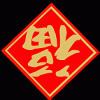
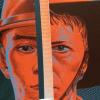

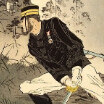







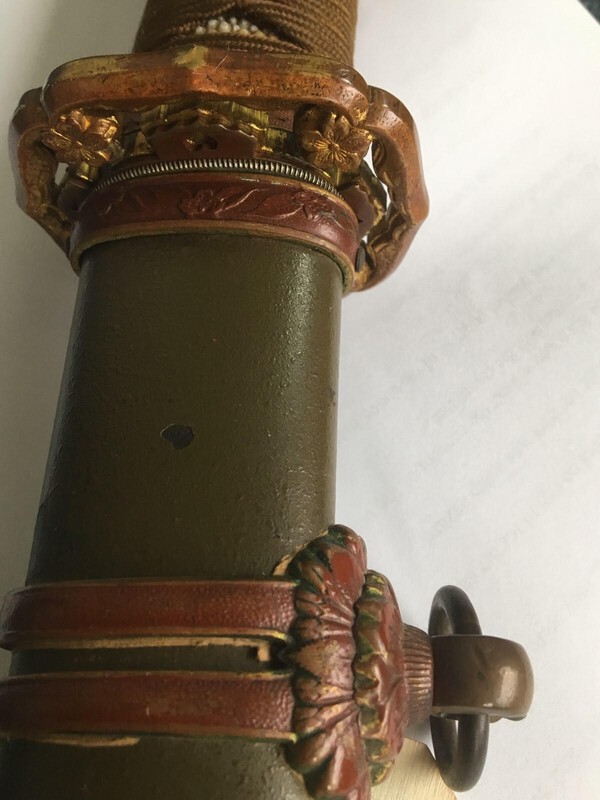


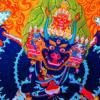





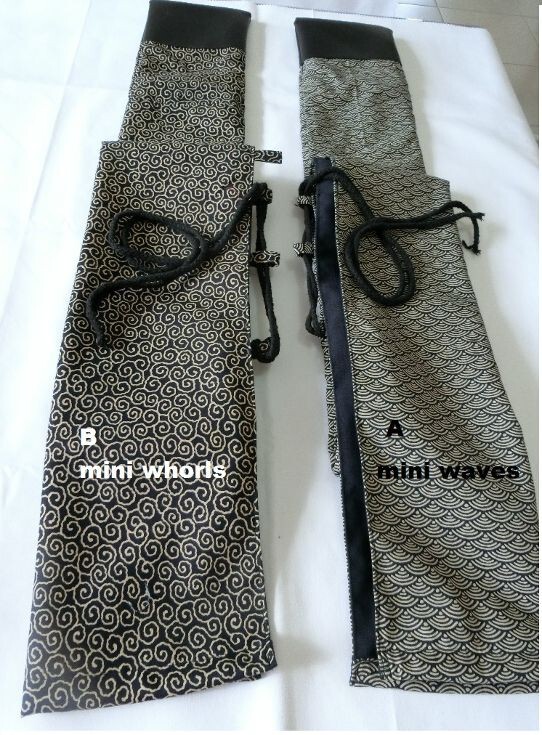


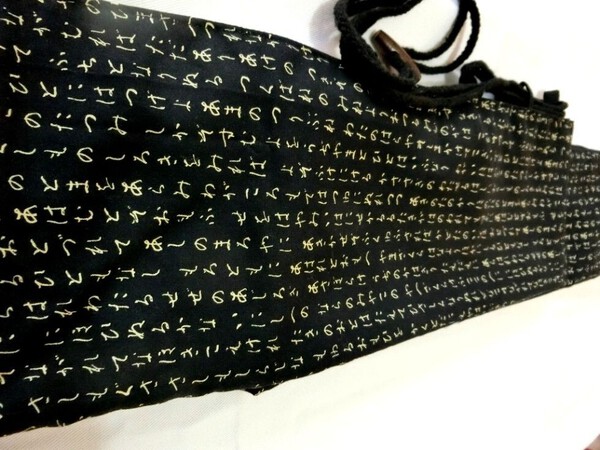

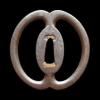


.thumb.jpg.bc10b59027a00aa142dce0349f3ba9e0.jpg)




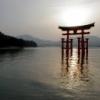


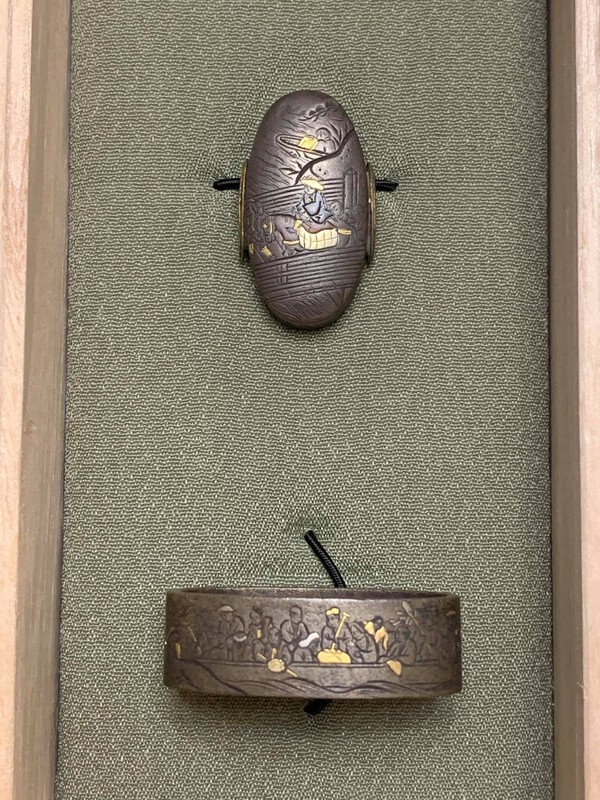
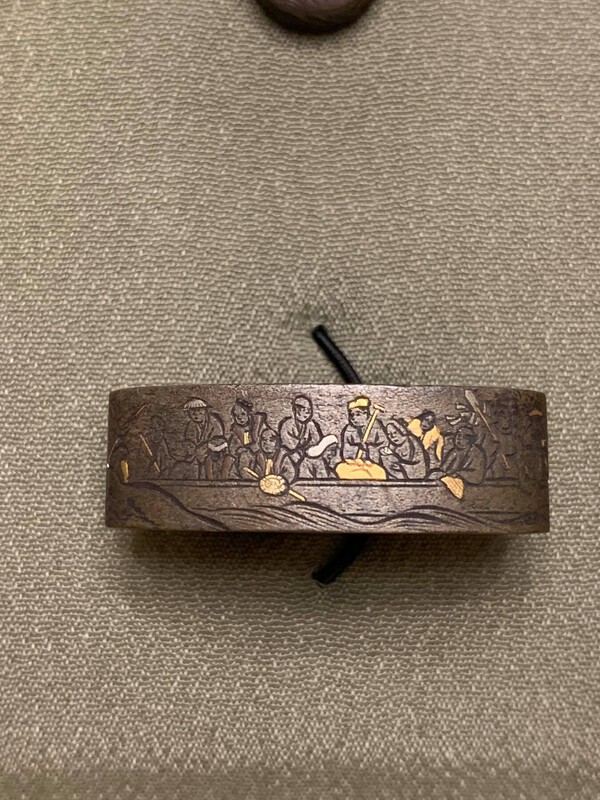


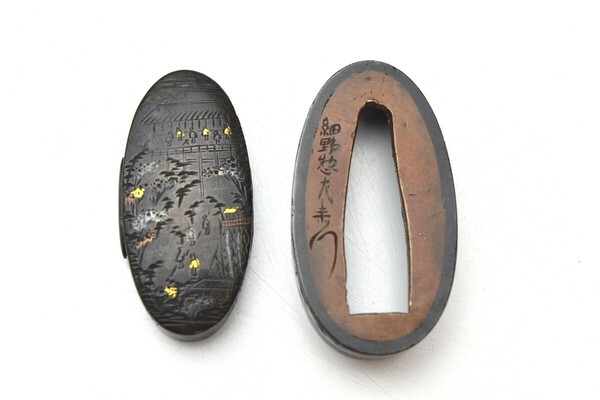











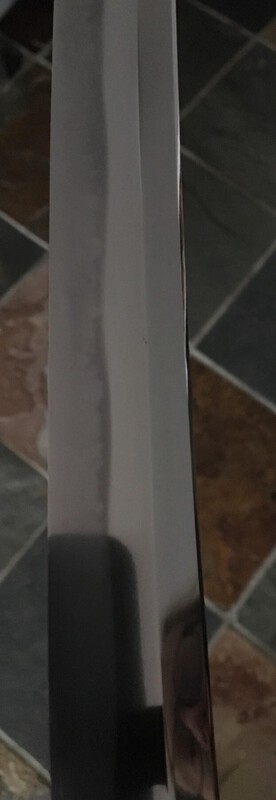






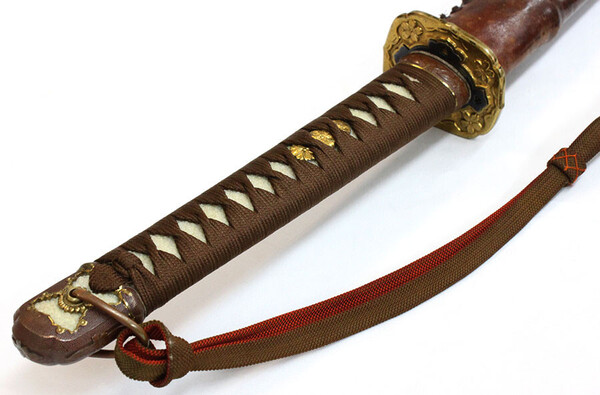

















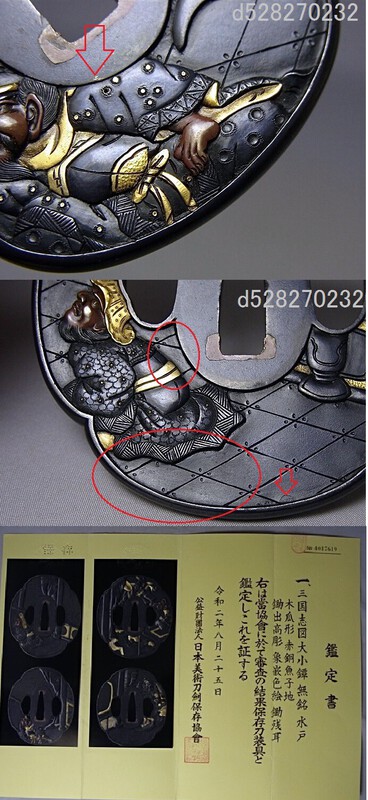




.thumb.jpg.e1807d5fcabe3dd819b7dabd0fb2a51e.jpg)

.thumb.jpg.bf493cfee7816a0724452be6145d2633.jpg)





.thumb.jpg.b8f702cfab0ba5e7579a374e594fd3c5.jpg)
.jpg.e364ed6885a21e429de5d7a2516a46e1.jpg)




.jpg.5aa8e3652ee34130e46020a70138791f.jpg)



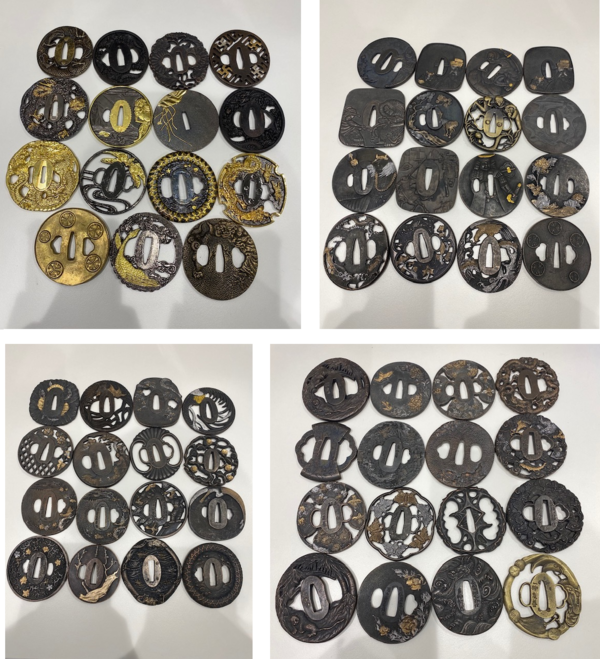





.thumb.jpg.f1fcd092e91ca701d5fd71d8eef6c4d0.jpg)
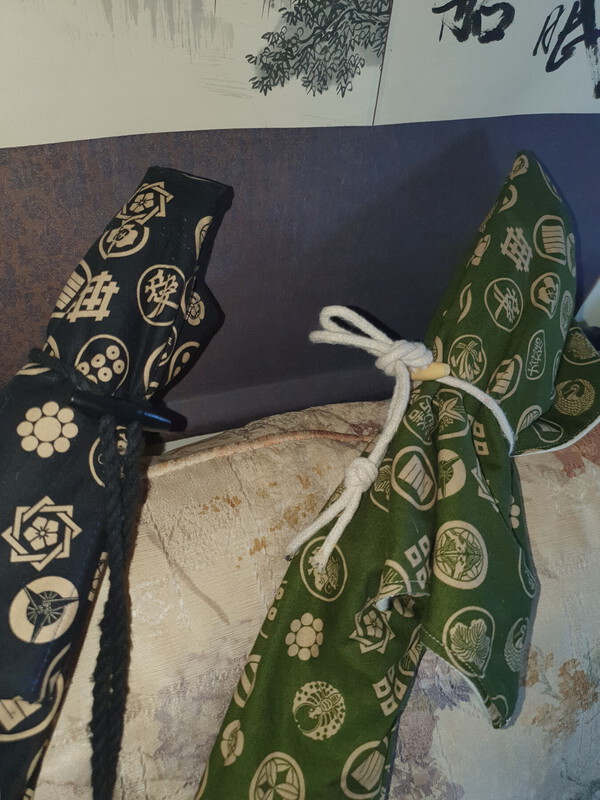

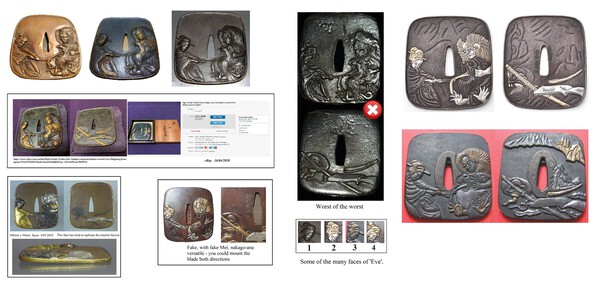




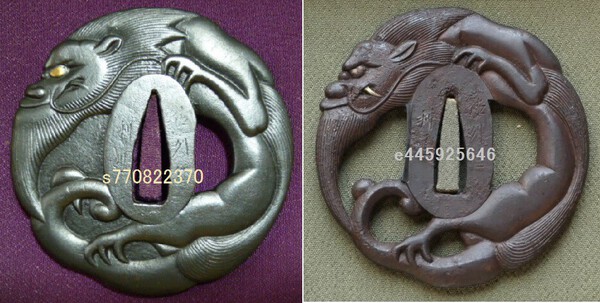
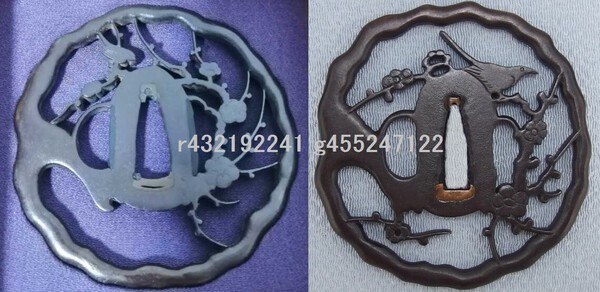
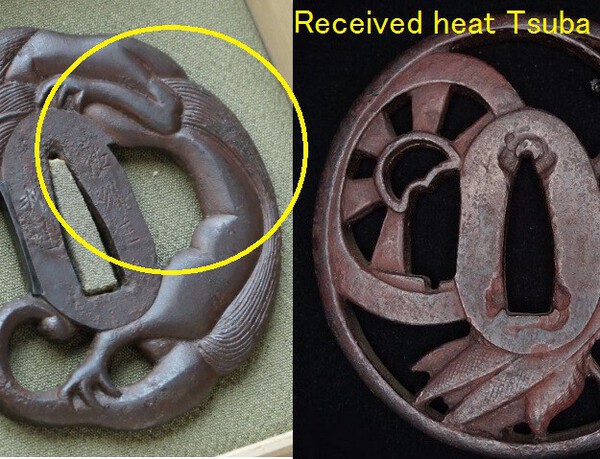
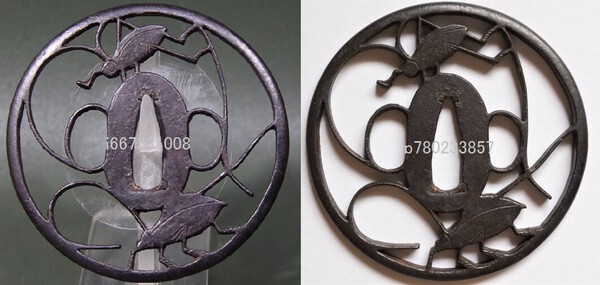
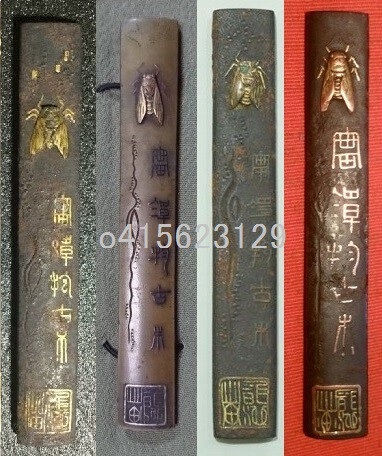
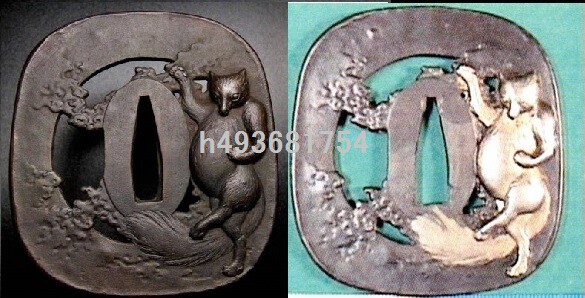
.thumb.jpg.b4ae87d81dc965c460bd05e306eaf8a7.jpg)
